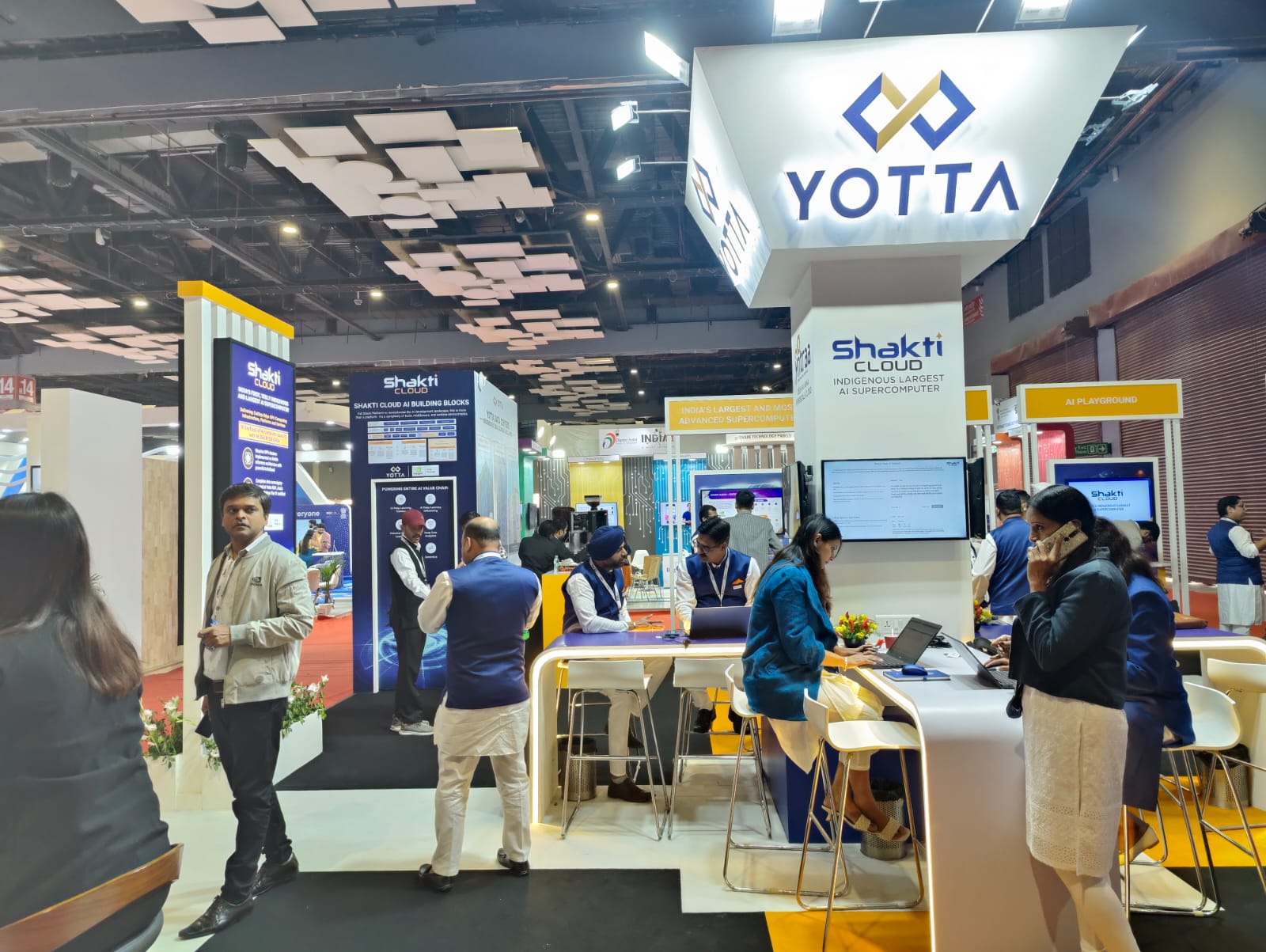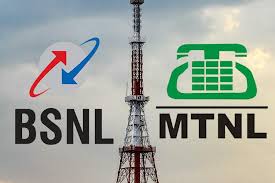News
Sterlite Tech net profit jumps 65% to Rs 87 crore in December quarter
NEW DELHI: Broadband solutions provider Sterlite Technologies Ltd (STL) on Wednesday reported a 65 per cent jump in consolidated net profit to around Rs 87 crore for the quarter ended December 2020.
The company had posted a net profit of around Rs 53 crore in the corresponding quarter of the previous financial year.
The company has announced the financial results for the third quarter ended December 31, 2020.
STL recorded revenues of Rs 1314 crores, demonstrating growth compared to last year and the preceding quarter. The outlook for 2021 looks promising as STL maintained its order book above Rs. 10,000 crores, and commercially launched new products for optical and wireless networks, setting the stage for disruptive growth in the 5G era.
2020 was a landmark year for Digital Networks
As the pandemic brought normal life to a standstill, 2020 established the power of digital networks beyond any doubt. With digital becoming the primary mode of human interaction, user penetration accelerated and network builders committed disproportionate investments.
This has triggered an unprecedented decade of network creation. As the new network drives connectivity to billions of unconnected users, 5G and FTTH became mainstream. A new architecture emerged, based on 4 key technology confluences of- i) wired and wireless, ii) hardware and software, iii) compute and connectivity, iv) at the edge. Recognizing these major shifts, STL focused on strengthening its core capabilities in optical solutions, network software, and system integration, while establishing new solutions in next-gen wireless access.
STL achieved strong results and established new solutions with marquee customers for future growth
In Q3, STL demonstrated continued growth and financial performance in its core business areas and invested in capability building, capacity enhancement, new product development, and the strengthening of its leadership team.
Some key highlights:
· Continued profitable growth. STL recorded consistent revenue growth in comparison with both the past quarter and the same period last year. This revenue growth has been driven by All-time high volumes of optical fibre and cables through deep customer engagement and Improved pace of network deployment, through process automation and robotics
· Investment in capabilities. After the successful investment in ASOCS to help drive virtual RAN solutions in early 2020, STL enhanced its Opticonn solutions with the acquisition of Optotec – a Europe based leader of Optical Interconnect Products. This strengthens STL’s end-to-end Optical Connectivity portfolio, and increased the STL’s addressable market by $8-10 Bn
· Enhancement of capacity. As the upcoming decade of digital network creation will keep driving demand for optical fibre, STL has committed Rs. 300 crores to expand its Optical Fibre Cable capacity from 18 to 33 million fibre kilometers. This expansion is on track for completion by June 2021
· Development of advanced technology products. STL’s R&D efforts have been pivotal in creating sustainable value for its customers. Telcos globally have entrusted their core network build outs to STL, given these advanced solutions. In this quarter, STL launched many disruptive products:
o Celesta – industry’s most advanced high fibre count ribbon cable with STL’s indigenously developed Stellar fibre, that is fast and easy to deploy. This slim cable that holds nearly 7,000 optical fibres has helped STL win large scale deals with two leading European telcos for nationwide deployment of optical networks
o 5G Portfolio – across Multi-Band New Radio, Wi-Fi-6, and Indoor Small Cell – STL has developed comprehensive hardware plus software solutions for unique use cases such as indoor Garuda 5G Small cells, Outdoor multi-band radio and Wi-Fi6 offerings. These have been developed in compliance with O-RAN standards, and with an ecosystem of radio, software, and virtual infrastructure technology companies
· Strengthening of the core leadership team to drive growth – STL welcomed to its team, Sandeep Girotra as the Global Sales Head, and a range of leaders with deep expertise in the digital networks industry, core technologies, and key account management, across India, UK, and USA. STL also enhanced its Board of Directors with the appointment of industry leaders Mr BJ Arun, Mr S. Madhavan and Mr Ankit Agarwal
· Recognized by BCG amongst top 100 Tech Challengers for the next generation of innovation in emerging countries, on the back of STL’s continued growth and new unparalleled technology innovations
Q3’ FY 21 Financial Highlights
Revenue: Rs. 1,314 crores up 13% Q-o-Q
EBITDA: Rs. 238 crores up 12% Q-o-Q
PAT: Rs. 87 crores up 48% Q-o-Q
Order Book: Rs. 10,737 crores
Commenting on STL’s performance and outlook, Dr. Anand Agarwal, Group CEO, STL said “Our strong evolving suite of end-to-end converged network solutions is fundamental to our continued growth. Post 2020, we are looking at a decade of extensive network creation. Mindful of this, we have invested in strong global talent and built solutions that can deliver best-in-class digital networks across the globe. Our philosophy of deep customer engagement, coupled with sustained investments will help drive profitable growth for our key accounts, as they deliver the best digital experience to their customers.”
News
Yotta’s Cloud Data Center in GIFT City, Gujarat goes live

NEW DELHI: Yotta Data Services, an end-to-end Digital Transformation service provider, has announced that its state-of-the-art data centre facility, “Yotta G1”, located in GIFT city, Gandhinagar is ready for service (RFS).
The opening of this data center marks the debut of Yotta in Gujarat and progresses the company’s mission to provide digital services in India’s high-growth markets.
G1 is Yotta’s fifth data center facility in the country. It joins four large operational data centers, two of which, at Navi Mumbai and Greater Noida are part of hyperscale campuses. Yotta G1 is uniquely located inside the International Financial Services Center (IFSC) zone of Gandhinagar’s Gujarat International Finance Tec-City (GIFT city).
G1 represents an investment of more than INR 500 cr. over five years across critical non-IT and IT / Cloud / AI compute infrastructure. The data center has a capacity of over 350 high-density racks and 2 MW power (which can be scaled further as per demand). The facility is designed to meet the most demanding digital needs of its customers, who may be located within GIFT City or anywhere in the world, by seamlessly delivering fault-tolerant facility infrastructure, high-performance Cloud compute and storage infrastructure, advanced physical and cyber security, unmatched connectivity, and steadfast sustainability.
For large global enterprises operating in the GIFT City IFSC zone, the G1 data center functions as a potential data embassy, whereby their data stored is subject to the laws and regulations of their home country, thus allowing them to maintain sovereignty over their data, even when stored in India. By storing data in a physically different location, global enterprises can ensure continuity of operations in case of major disruptions within their borders. The data center’s location also ensures compliance with the IFSC regulations, providing businesses in the zone with distinct advantages like free foreign exchange convertibility, a liberalised regulatory environment, and business-friendly policies. It also helps enterprises adhere to IFSC’s compliance requirements, including being mandated to host their data within the IFSC zone.
Commenting on the announcement, Darshan Hiranandani, Co-founder and Chairman, Yotta Data Services, said, “The state of Gujarat, with GIFT City, has been at the forefront of providing a viable and sustainable platform for global businesses to set up base in India. The setting up of the IFSC zone is a further testament to their vision for financial services companies. We are proud to support this vision of the Gujarat government with a state-of-the-art data center within the IFSC zone, providing the latest and best in cutting-edge technologies to help businesses set up and scale their businesses while also adhering to all regulatory requirements.”
Adding to this, Sunil Gupta, Co-Founder, MD & CEO, Yotta Data Services, said, “Yotta’s G1 marks a pivotal milestone in delivering high-end data center, Cloud, AI compute, storage, connectivity and cybersecurity services to enterprises both on a global and local scale in the Gujarat region. Besides serving the domestic enterprises within and outside GIFT City, our data center shall serve as a potential data embassy for global enterprises, enabling them to adhere to their respective country’s laws while offering a dependable and secure locale for offshore data storage.”
G1 data centre stands distinct in GIFT city for being a data center offering more than just colocation services. True to Yotta’s stature as the end-to-end digital transformation partner of choice for enterprises, G1 brings forth a suite of key features, ranging from advanced data security and customised business solutions to an indigenous hyperscale cloud offering, AI-GPU compute offering, state-of-the-art infrastructure, cybersecurity expertise, seamless integration with managed IT services, 24/7 customer support, cost optimisation, and an overall competitive edge.
This announcement follows on the heels of Yotta’s recent launch of its cloud services – Shakti Cloud and Yntraa Cloud. Powered by NVIDIA’s top-of-the-line GPUs, Shakti Cloud is India’s largest & fastest AI-HPC supercomputer, delivering cutting-edge GPU computing infrastructure, platforms, and services, including Infrastructure as a Service, Platform as a Service, and Software as a Service. Yntraa Cloud, on the other hand, is a truly indigenous hyperscale cloud platform at par with global cloud platforms, offering an exhaustive range of cloud products and services.
News
Optiemus Infracom joins hands with Corning International

NEW DELHI: Domestic contract manufacturer Optiemus Infracom has entered into a joint venture with US-based speciality glassmaker Corning International to set up India’s first manufacturing facility for producing high-quality finished cover glass parts for the mobile consumer electronics industry.
The collaboration between both the companies will help expand India’s electronics manufacturing ecosystem, as the Indian government strengthens its Make in India initiative. As a part of the joint venture, the companies strategically aim to set up a world-class manufacturing facility in India, powered by cutting-edge technologies and processes.
Driven by a shared commitment to innovation and technological excellence, this collaboration will pave the way for the manufacturing of “Made in India” finished cover glass parts for use in mobile consumer electronic devices, and other cover glass applications, to meet the needs of next-generation mobile consumer electronic devices.
The joint venture signifies a powerful synergy between Optiemus’s deep domestic industry and manufacturing knowledge of electronics and telecom market and Corning’s globally-acclaimed expertise in advanced glass technology. By combining these strengths, the joint venture aspires to not only establish cover glass manufacturing capabilities and capacity in India, but also to contribute significantly to the creation of jobs and skill development within India’s thriving technology sector, the companies said in a statement.
Ashok Kumar Gupta, Chairman, Optiemus Infracom, said, “It is a matter of great pride for us to actively contribute to the growing manufacturing ecosystem in the country. With this joint venture, initiated in line with the vision of Hon’ble Prime Minister of India of ‘Make in India’ programme and the “Atmanirbhar Bharat” initiative, we are committed to make available world-class high-quality products for global and local brands.”
“Embarking on this new journey, we intend to emerge as one of the top manufacturers of finished cover glass parts for use in mobile consumer electronic devices in the next five years. Our collective expertise in innovation, design, and manufacturing, will provide holistic solutions for the brands,” Gupta added.
5g
MediaTek Catch-up with Tech: Infinix Zero 30 5G with Dimensity 8020 launched

NEW DELHI: Chipset maker MediaTek, which claims to power more than two billion connected devices every year, hosted ‘Catch-up with Tech’ in collaboration with handset brand Infinix on August 28 to share insightful and engaging conversations about the new-age smartphones and innovative technologies powering everyday lives.
The meet-up threw the spotlight on the MediaTek Dimensity Auto, Satellite solutions and Generative AI along with an extensive showcase of newly-launched Infinix Zero 30 5G powered by MediaTek Dimensity 8020, Infinix GT 10 Pro powered by MediaTek Dimensity 8050, and Infinix QLED TV powered by MediaTek.
In terms of specs, the Infinix Zero 30 5G is tailored for young storytellers and creators, featuring the first-ever smartphone to deliver 4K 60fps video recording from its 108 MP OIS rear camera and ultra-high resolution 50MP front camera. The Zero 30 series powered by MediaTek Dimensity 8020 is said to be a game changer for the front camera vlogging experience along with being the slimmest curved AMOLED smartphone in the segment with glass and a vegan leather back panel. It also claims to be one of the most premium-looking devices in the segment.
The event witnessed a panel discussion moderated by Anuj Sidharth, Deputy Director Marketing & Corporate Communications, MediaTek and included expert panelists from Infinix, MediaTek and two renowned professional photographers.
“With the fifth edition of Catch-up with Tech, we aim to bring consumers closer to the technology and enable them to make informed buying decisions based on their diverse needs. In collaboration with Infinix, this meet-up is in-line with MediaTek’s vision of technology democratization and making innovative technology accessible to everyone,” said Anku Jain, Managing Director, MediaTek India. “The MediaTek Dimensity 8020 in Infinix Zero 30 5G brings faster displays, brilliant cameras and ultra-fast performance. Further, MediaTek Imagiq technologies enrich the capture experience by combining dedicated AI, imaging processors and accelerators to provide incredible results,” he added.
Anish Kapoor, CEO, Infinix Mobile India, said, “Featuring India’s first 50MP 4K 60 fps video recording, Infinix Zero 30 5G is primed to redefine smartphone imaging capabilities, setting a new standard for the creators and vlogging enthusiasts. Our collaboration with MediaTek has played a pivotal role in shaping our exceptional smartphone portfolio, and the Zero 30 5G stands as evidence of our unwavering commitment to innovation and delivering unmatched experiences to our users. The display and design of the device represent a leap forward in smartphone technology. As Infinix Zero 30 5G hits the shelves, we are positive that our customers will find this new offering as exhilarating as we do, further empowering creators to capture their story like never before.”
Radhakrishnan Chakyat, a photography evangelist, founder and host of Pixel Viilage, said, “Infinix Zero 30 5G smartphone powered by MediaTek Dimensity 8020 chipset has amazing hardware features, an excellent camera, dual-view video mode and is primed for optimal content creation and saves a tremendous amount of editing time.”
Aarzoo Khurana, a wildlife photographer, said, “Over the last few days, I clicked various pictures and recorded a few videos with the newly-launched Infinix Zero 30 5G powered by MediaTek Dimensity 8020, and the experience has been truly inspiring. Infinix’s smartphone’s OIS feature helps content creators click shake-free pictures and the front camera, which is extremely sharp and detailed, enables content creators to click countless selfies.”














